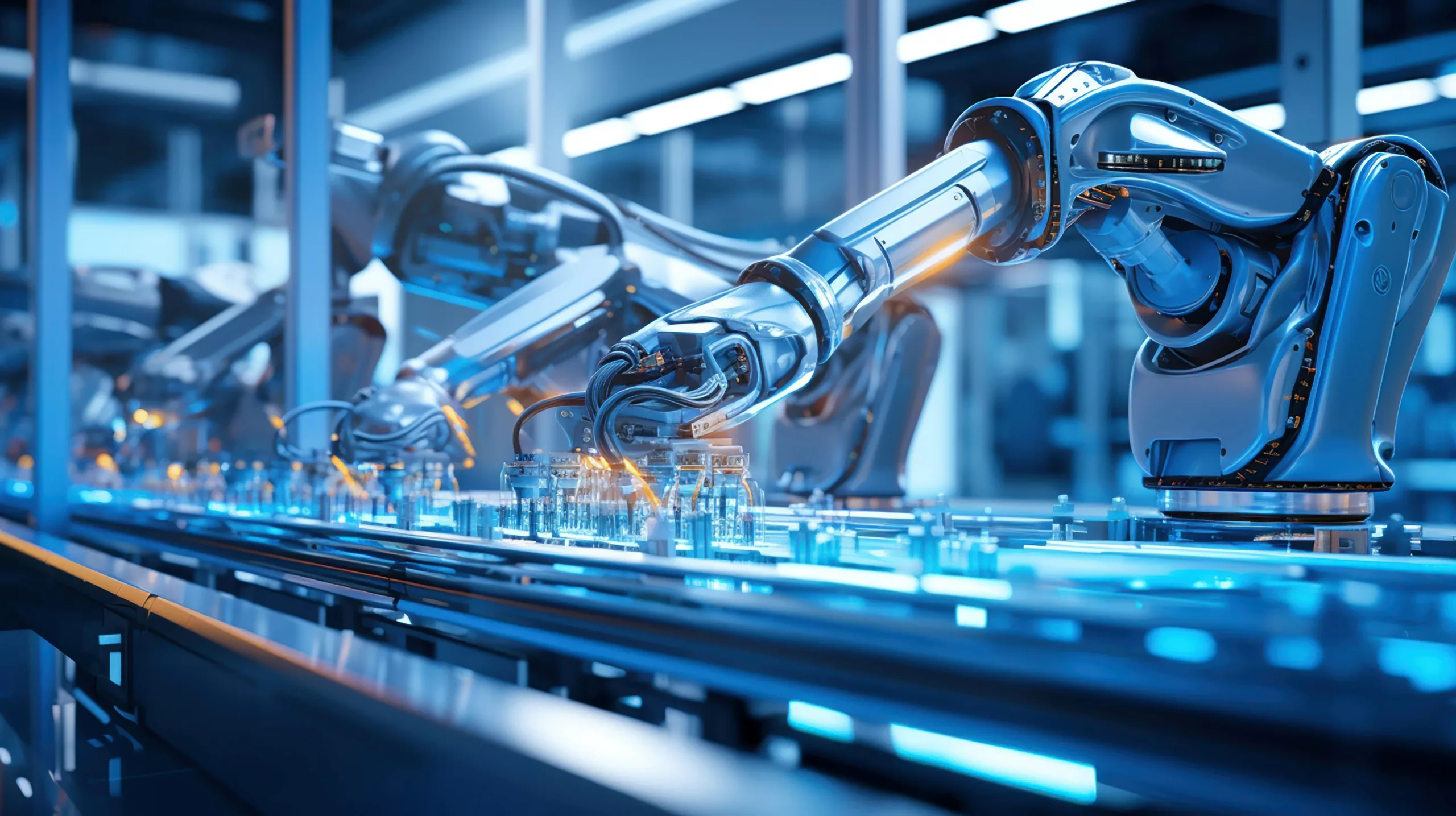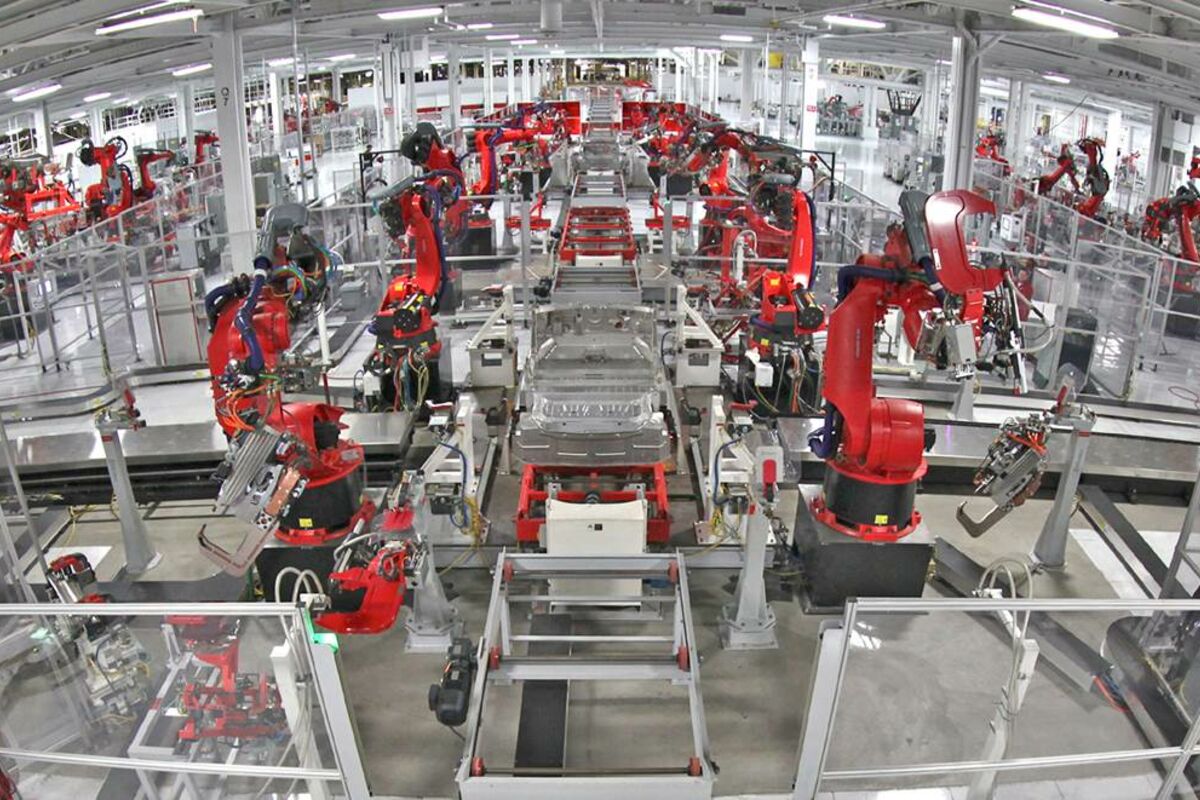Business Automation: An Essential Shift to Stay Competitive
Discover why the rapid adoption of automation technologies has become a strategic necessity for companies of all sizes
The Inevitable Digital Transformation
The business world is undergoing an unprecedented change. Digitalization and new automation technologies are no longer mere options for visionary companies—they have become a strategic necessity for any organization that wishes to remain relevant in a constantly evolving commercial environment.
The numbers speak for themselves: in 2023, more than 60% of businesses have already started implementing automation solutions in their daily operations. This trend is not just a temporary fad but a profound restructuring of the way companies operate and create value.

Comparison of AI and automation investments in G7 countries
At a time when global competitiveness is at stake, French businesses must realize that they face an imperative to adapt. Organizations that delay integrating these new technologies risk not only losing market share but also having to make drastic workforce adjustments to compensate for their technological lag.
Automation in Accounting and Banking Processes
The digital revolution is profoundly transforming the financial management of companies. Traditional accounting systems, often time-consuming and prone to human error, are gradually giving way to highly automated integrated solutions.

Strategic financial decisions are now assisted by artificial intelligence
The industrial giant Siemens recently reported a 25% reduction in accounting costs by automating over 80% of its financial processes. This transformation not only delivered direct savings but also improved operational accuracy by 35% while reducing invoice processing time by 60%.
Comparison: Large Corporations vs. SMEs
SMEs can now benefit from solutions once reserved for large corporations. TextilExpress, an SME with 40 employees, optimized its cash flow with cloud-based accounting automation solutions, reducing its payment delays from 28 days to an average of 12 days.
Unlike traditional systems that required significant upfront investments, current SaaS solutions enable small businesses to access sophisticated tools with pricing models adapted to their scale.
These advances are made possible by integrating various complementary technologies:
- Connected ERP systems that centralize and harmonize financial data
- Advanced OCR tools capable of automatically capturing information from invoices and receipts
- API banking interfaces enabling real-time transaction reconciliation
- Predictive algorithms that anticipate cash flow needs
For companies still hesitant to take the plunge, the figures are clear: competitors who have adopted these technologies achieve, on average, a 30 to 40% reduction in financial and accounting process costs.
Automation of Messaging and Workflows
Communication is the backbone of any organization. Automating messaging flows and workflows is now one of the most powerful levers to boost productivity and ensure that every piece of information reaches the right person at the right time.

Impact of workflow automation on team productivity
Startup TechVision revolutionized its commercial approach by implementing a complete automation system for its prospecting chain. The result? A 40% increase in lead conversion rates and a 60% reduction in time spent on client follow-up. This efficiency gain translated into a 27% revenue growth in just six months.
| Process | Traditional Approach | Automated Approach | Efficiency Gain |
|---|---|---|---|
| Handling incoming requests | Manual sorting, average delay of 24h | Automatic categorization, response in 15 min | 96% time saved |
| Lead follow-up | Manually scheduled follow-ups | Behavior-based automated sequences | 75% time saved, +40% conversion |
| Lead qualification | Subjective evaluation by the sales team | AI-based automatic scoring | 35% improved accuracy |
| Client onboarding | Manual multi-step process | Automated workflow with verifications | Reduced duration from 2 weeks to 3 days |
Leading companies in the sector now adopt tools such as:
- Intelligent chatbots capable of resolving up to 70% of customer inquiries without human intervention
- AI-enhanced CRMs that suggest the best commercial actions
- Personalized automated response systems adapted to the recipient’s profile and behavior
- No-code workflow tools that enable the automation of business processes without technical expertise
“We used to spend 30% of our time handling administrative tasks and manual follow-ups. Automating our workflows has allowed us to redirect that time towards innovation and client relationships. It has been truly transformational.”
— Sarah Martin, Marketing Director, TechVision
Automation in Content Creation and Customer Support
Content creation and customer support have long been time-consuming areas for businesses. Thanks to spectacular advances in artificial intelligence technology, these activities are now undergoing a radical transformation that redefines efficiency and personalization standards.

Next-generation AI chips enable advanced linguistic analysis for automated content creation
The Accor hotel group deployed an AI-enhanced customer support system that reduced response times by 35% on customer inquiries. This multilingual system can handle requests in over 15 languages, with a 28% improvement in first-contact resolution. Even more impressively, customer satisfaction has increased by 22%, demonstrating that well-designed automation can enhance rather than degrade the user experience.
In the SME sector, MarketPulse—a marketing consultancy with only 15 employees—implemented AI-assisted writing tools for its analytical reports. This transformation allowed them to reduce content production costs by 20% while increasing their publication volume by 45%, creating a decisive competitive advantage.
Practical Applications of AI in Writing and Support
- Automated generation of financial reports – Transforming raw data into structured narrative analysis
- Creation of personalized marketing content – Automatically adapting tone and message to target segments
- Dynamic FAQs – Systems evolving based on actual customer queries
- Contextual virtual assistants – Capable of understanding a customer’s complete history to provide personalized support
- Sentiment analysis – Automatic detection of dissatisfied customers who require immediate human intervention
These technologies do not aim to completely replace humans but to enhance their abilities by freeing them from repetitive, low-value tasks. However, companies that delay adopting these tools quickly find themselves at a disadvantage in terms of operational costs and responsiveness to customer demands.
Automation of Telephone Communications and Direct Contact
Despite the rise of digital channels, the telephone remains a crucial contact point for many companies. Intelligent automation of phone interactions is now a strategic lever to optimize the customer experience while controlling operational costs.

Industrial automation is now extending into customer relations
Service provider AssurExpress revolutionized its call center by deploying an intelligent voice system capable of automatically identifying the caller, analyzing their previous interaction history, and routing the call to the most qualified agent. This transformation resulted in a 50% reduction in administrative tasks for operators, a 75% decrease in average wait time, and a 32% overall increase in efficiency.
“Our agents used to spend 40% of their time documenting calls and handling administrative tasks. Automation allowed us to redirect that time towards solving customer issues and improving service quality.”
— Jean Dupont, Operations Director, AssurExpress
The integration of advanced CRMs with telephone systems now allows for features that seemed futuristic just a few years ago:
- Automatic call transcription with sentiment analysis and key point extraction
- Real-time suggestions to agents based on customer history
- Intelligent callback systems that propose call backs at optimal times
- Automated appointment scheduling synchronized with team calendars
Case Study: SME vs. Large Enterprise
SME – LégalConseil Law Firm (12 employees):
Implementation of an appointment scheduling system and automatic call qualification. Results: 35% reduction in time spent on organization, 28% increase in consultations. Initial investment of €6,500 amortized in 4 months.
Large Enterprise – CompagnieTélécom (2500+ employees):
Deployment of a fully AI-augmented call center. Results: 67% of requests handled without human intervention, 45% reduction in operational costs, and new agent training time reduced from 6 weeks to 10 days.
Current solutions are adaptable to all budgets and company sizes. However, the gap is rapidly widening between organizations that have automated their telephone interactions and those still operating with traditional systems, both in terms of operational efficiency and customer satisfaction.
Long-Term Projections and Socio-Economic Impacts
The acceleration of automation and AI technologies is profoundly reshaping the global economic landscape. Projections for the next 5 to 10 years indicate a radical transformation of the labor market and traditional economic models.

Projected transformation of jobs by 2030 based on the level of automation
According to a recent study by the World Economic Forum, we can expect a 20 to 30% reduction in manual administrative positions by 2030, along with a 40 to 50% increase in operational efficiency for companies that fully embrace automation.
These changes will also bring about a significant redistribution of economic value:

Projected global market growth for automation and AI technologies
Analysis of Social and Economic Impacts
Challenges and Issues of Automation
Potential Negative Impacts:
- Significant job displacement in some administrative sectors
- Risk of widening inequalities between skilled and unskilled workers
- Adaptive pressures on educational and vocational training systems
- Potential concentration of economic power in companies mastering these technologies
Opportunities and Solutions:
- Creation of new roles related to the supervision and improvement of automated systems
- Development of targeted re-skilling programs
- Emergence of new markets based on the attention economy and human creativity
- Overall productivity gains that can finance new social models
Proactive companies are already implementing adaptation strategies, including ongoing training and re-skilling programs for their employees. For example, the Renault group has launched an internal “Digital Academy” that has enabled more than 5,000 employees to acquire new skills suited to an increasingly automated work environment.

Global distribution of investments and AI expertise
This transformation represents both a major challenge and an unprecedented opportunity. Companies that successfully navigate this transition by judiciously combining automation of repetitive tasks with the enhancement of uniquely human skills (creativity, empathy, critical thinking) will be the ones to thrive in this new economic paradigm.
An Inevitable Pivot to Stay Competitive
In the face of the ongoing technological revolution, companies find themselves at a crucial strategic crossroads. Automation is no longer an option or a competitive edge—it has become a prerequisite for survival in a rapidly changing economic environment.

The factory of the future: automated production with enhanced human supervision through AI
The data is unequivocal: organizations that embraced these technologies early on show financial performances that are 20 to 30% superior to their competitors, while enjoying greater agility in responding to market disruptions.
For leaders, three imperatives emerge:
- Act Now — Every month of delay widens the gap with competitors already engaged in this transformation
- Adopt a Strategic Approach — Identify the processes with the highest potential for automation and return on investment
- Support the Human Transition — Invest in training and re-skilling employees to maximize the synergy between humans and machines
Those who delay will eventually be forced to implement drastic salary optimization measures to compensate for their technological lag. Conversely, companies that embrace this revolution can not only improve their economic performance but also create new high-value roles for their employees.
The path is clear: automation is not a threat to fear but an opportunity to seize—provided action is taken with determination and strategic vision.


